Come Down to Casa Dolores
Bath Street Boasts West Coast’s Only Museum of Popular Mexican Art
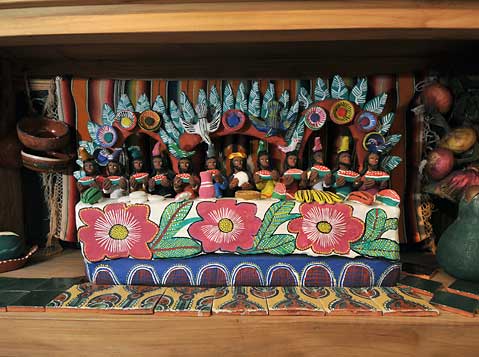
Just up from Carrillo, on Bath Street, there’s a quaint home that — aside from being Santa Barbara’s only remaining two-story adobe, built in 1843 — is about as unassuming as can be. But walk across the sandy patio and inside the open door, and you’ll find a colorful world of countless crafts, all made by hand south of the border. This is Casa Dolores, which is billed as the West Coast’s only museum of popular Mexican art, and everyone’s invited to its first-ever open house on Saturday, April 10, from 1 to 4 p.m., complete with mariachi music, appetizers, and guided tours.
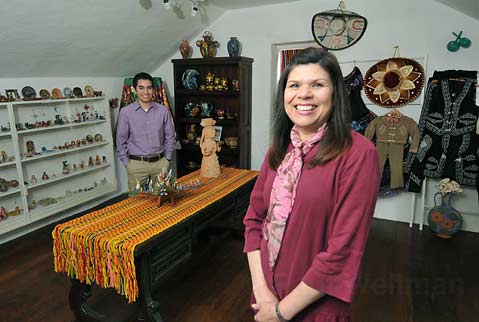
The museum was founded in 2008 by Linda Cathcart, an art historian who began collecting as a child during family trips. Her parents were schoolteachers and did not have a lot of money to travel, so their trips tended to be close to their Whittier, California home. That meant plenty of visits to Mexico, which was “fun and exotic and inexpensive,” recalled Cathcart. “My brother and I were given a little allowance to buy toys and I used to buy all kinds of folk art.” She began saving everything she bought, and as Cathcart grew older, so did her sophistication about the popular arts.
“This is art of poverty. It’s made by people who have nothing,” said Cathcart of her lifelong passion, explaining that the artisans often use everything from bottle caps to twigs in their pieces. “They are so creative because it’s really hard to make something out of nothing. I really admire that kind of ingenuity.”
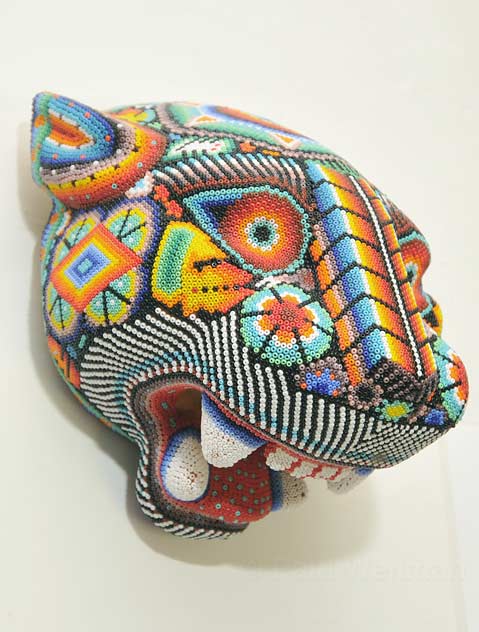
Eventually, she got art history degrees from Cal State-Fullerton and New York University, studied at the Courtlauld Institute in London, and worked at the Whitney Museum in New York, the Albright Know Art Gallery in Buffalo, and as director of the Houston Museum of Contemporary Art. Five years ago, she retired and decided to move to Santa Barbara, where her parents had also retired to a few years earlier. At that point, her collection of Mexican art had grown to more than 6,000 objects — from ceramics and wood carvings to leather, paper, glass, and tin pieces — that required multiple storage units.
Then one day, while walking around downtown Santa Barbara, Cathcart saw a “For Sale” sign in front of the old adobe on the 1000 block of Bath Street, a few doors up from the Goodwill thrift store and Sushi Teri Restaurant. “I went in out of curiosity,” she said. “I had no intentions or funding to buy a building.” But as she walked into the deeply historical and authentically sparse home, Cathcart explained, “It was like a light bulb going off. ‘Oh my God,’ I thought. “This would be perfect for the collection.’” She told her mother, who agreed, and they came up with a plan to purchase the property. It took another year to get everything out of storage, and there is still work to be done. “We’re still cataloguing things,” said Cathcart, adding that there is another full storage box to unload. But in August 2008, Casa Dolores: Center for the Study of the Popular Arts of Mexico was opened to the public with little fanfare.
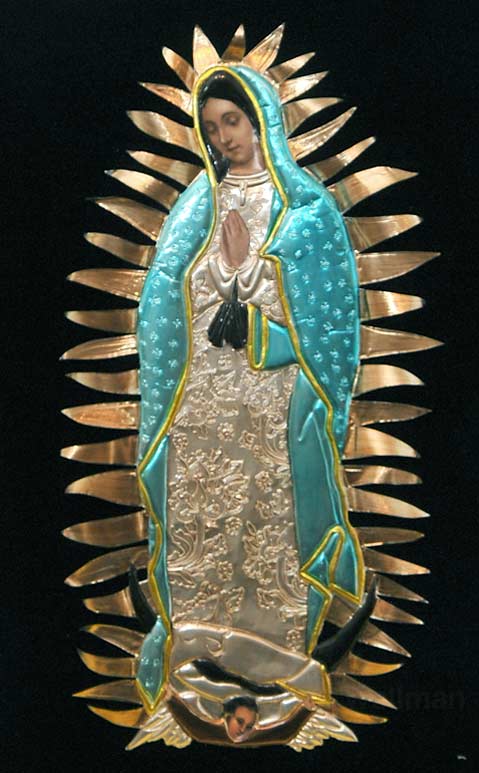
A recent walk through the adobe with the casa’s assistant director, Irma Esquivel-Kromis, and exhibit coordinator, Gabriel Ramirez-Ortiz, revealed that it is indeed a work in progress, but one with much possibility. In the entryway, large Dia de Los Muertes-themed statues were being taken down while a show of masks was being put up. Off to the left, a room is fashioned into a typical knick-knack store — called “La Tiendita,” or little store — with sombreros, volcanic rock carvings, marionettes, earthenware, and other things that you might find in a Mexican shop filling the shelves. To the right is the religious room, with Virgins of Guadalupe, small altars, and “trees of life,” and that’s connected to the former bathroom that’s now full of tin wall hangings. Amid the pop-art explosion, Esquivel-Kromis laughed about the founder’s collecting habits, calling it a true “obsession” and explaining, “Up to this day, she keeps buying things.”
She then showed off the kitchen, which is decorated as a traditional Mexican kitchen would be, with clay cups hanging from the roof near the window, various jars and other sorts of pottery on the shelves, and a tortilla-maker on the sink. Modern Mexican kitchens are nothing like this, said Esquivel-Kromis, who hopes that the museum will attract people from Mexico who’d like to reminisce about the days of old. “Some of these things are so old that they don’t really make them anymore,” she explained. Upstairs in two would-be bedrooms, the art gets even more interesting, with copper work, talavera pottery, miniatures, costumes, and paper maché dolls taking up the space.
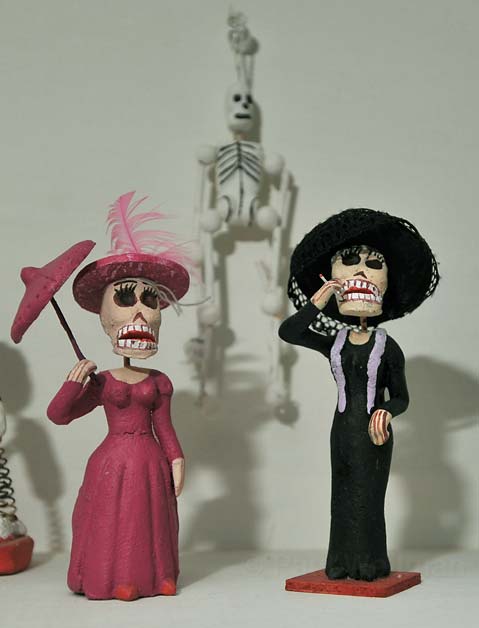
The alcove at the top of the wooden staircase, however, features the museum’s most visually stimulating exhibit: more than a dozen alebrijes, which are whimsically painted wooden carvings of strange beasts, from devilish dragons to lazy armadillos, all decorated with the detail and color scheme of acid-trip fantasies. The relatively recent art form was inspired by the dreams that artist Pedro Linares had in the 1930s, and he began to make the creatures out of paper maché. Later, a Oaxacan artist named Manuel Jimenez started doing the same designs but with wood, and now the pop art pieces are a national phenomenon, with an annual Noche de Los Alebrijes culminating in a big Mexico City parade every fall. Across the alcove is another example of colorful intricacy, this one created by the Huichol Indians of northern Mexico who place tiny beads one-by-one onto a wax mold to make, in this case, the mask of a jaguar. “That is why this work is very expensive,” said Esquivel-Kromis, referring to its time-consuming labor. Just this small room — filled with creatures of nature being viewed through a colorful cosmic lens — is alone worth a visit to Casa Dolores.
Luckily, aside from the open house, anyone can come check it all out from 1 to 4 p.m., Tuesday to Saturday, for free. “I don’t like museums that are very elitist and snobby. I can’t stand that,” said Cathcart. “All the museums I’ve ever worked in were very open to the public and I think that’s the way it should be, so I want this one to be like that.”
In the months to come, Cathcart and Esquivel-Kromis plan to host more cooking classes, art workshops, and other outreach events to get the word out about Casa Dolores. In time, Cathcart hopes that it will become a regular stop on the tourist train and that locals will make sure to come by from time-to-time. “It’s pretty unique. There aren’t any other popular Mexican art museums on the West Coast,” said Cathcart, admitting that there may be one coming to San Francisco at some point. “We’re really the only one.”
4•1•1
The Casa Dolores open house is on Saturday, April 10, 1-4 p.m. For more info, call 805-963-1032, e-mail casadoloressb@gmail.com, or see www.casadolores.webs.com.



